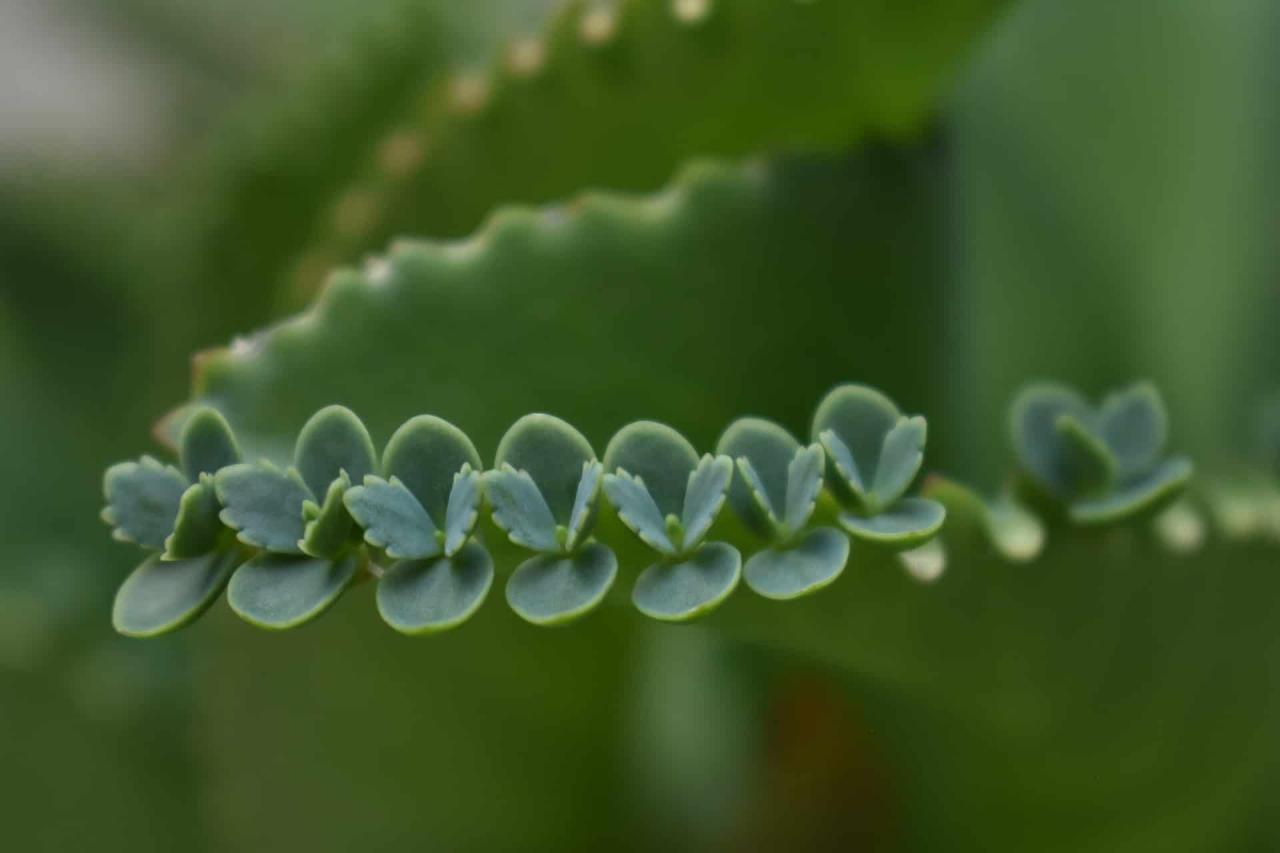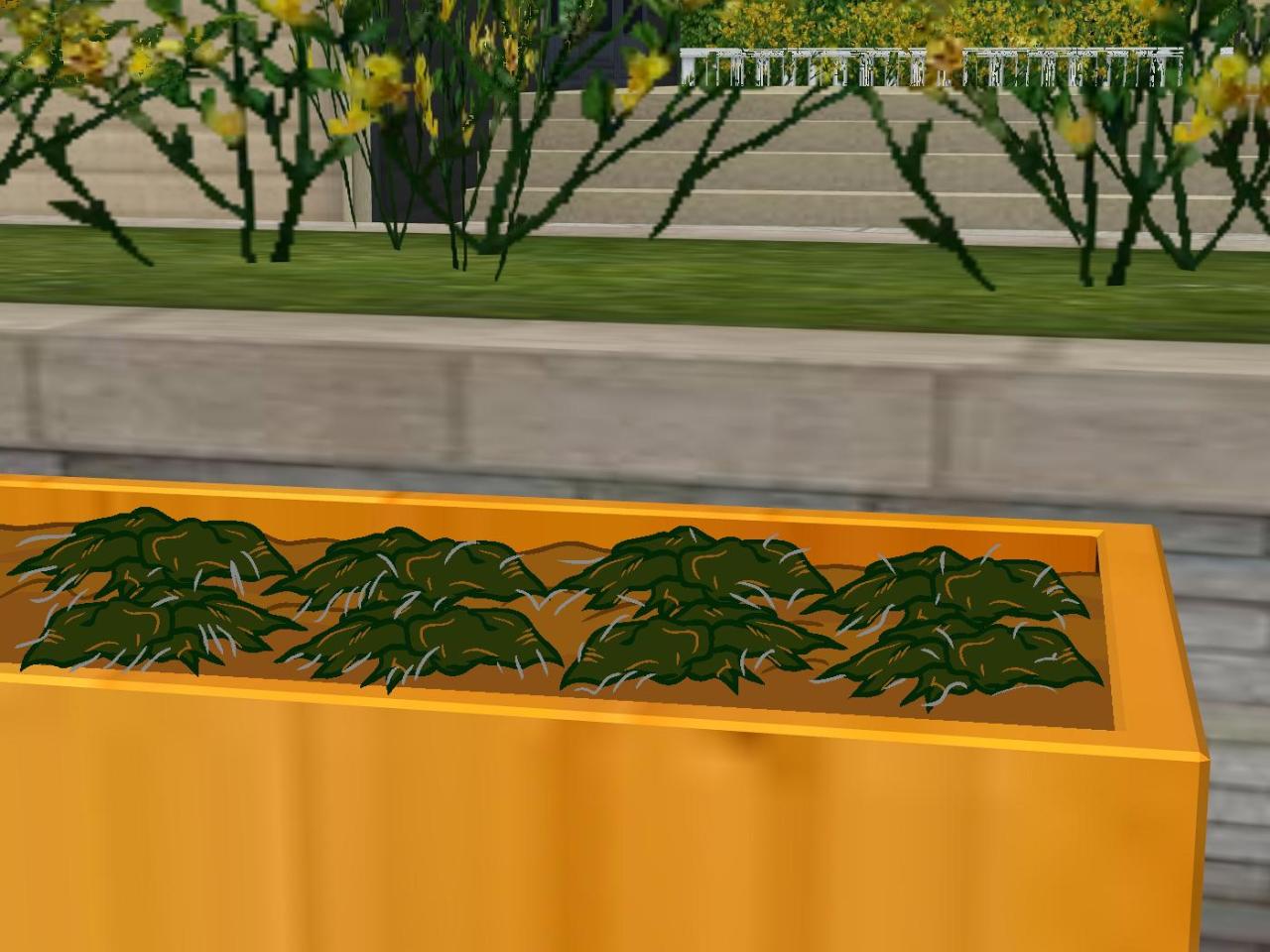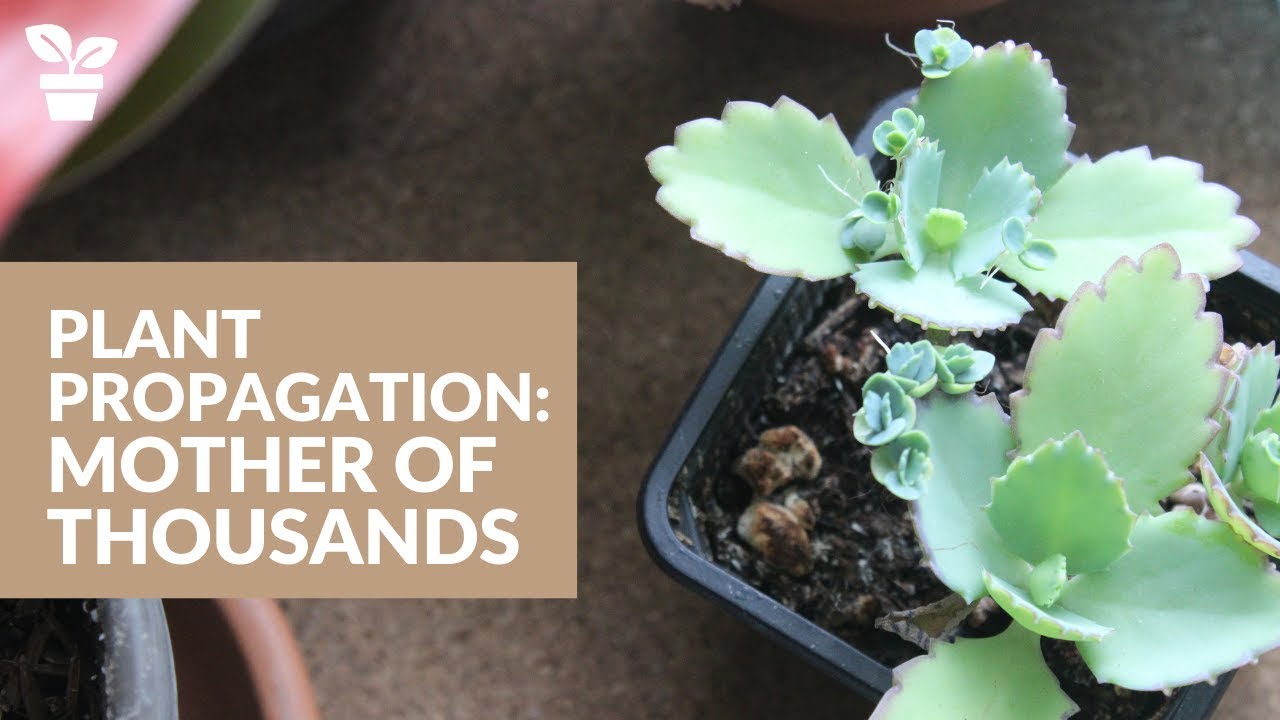How to Multiply Your Mother of Thousands with These Proven Methods unlocks the secrets of this fascinating plant, revealing how to easily propagate and cultivate this unique species. The Mother of Thousands, aptly named for its prolific plantlet production, is a popular choice for beginner gardeners and experienced plant enthusiasts alike.
Its captivating appearance and ease of propagation make it an ideal choice for both indoor and outdoor environments.
This guide delves into the intricacies of multiplying Mother of Thousands, offering a comprehensive approach to maximizing your plant’s potential. From understanding its unique characteristics and propagation methods to mastering the art of cultivation, this article provides the knowledge and practical tips you need to create a flourishing colony of these charming plants.
Understanding Mother of Thousands

The Mother of Thousands plant, scientifically known asKalanchoe daigremontiana*, is a succulent renowned for its unique propagation method and striking appearance. This plant, native to Madagascar, is characterized by its fleshy, upright leaves with distinctive brown spots. The most striking feature of the Mother of Thousands is its ability to produce numerous plantlets along the edges of its leaves.
Plantlet Propagation
Plantlets are miniature versions of the parent plant that develop along the margins of the leaves. These plantlets, also known as “bulbils,” are essentially clones of the mother plant, genetically identical to their parent. The plantlets readily detach from the leaf and can be easily rooted in soil, making propagation incredibly simple.
Growing Conditions
Mother of Thousands thrives in bright, indirect sunlight. They prefer well-draining soil, such as a cactus potting mix, to prevent root rot. Watering should be infrequent, allowing the soil to dry out completely between waterings. The plant is relatively drought-tolerant and can tolerate some neglect.
Methods for Multiplication

The Mother of Thousands ( Kalanchoe daigremontiana) is a succulent that thrives on its ability to reproduce prolifically. The plant is aptly named, as it produces numerous plantlets, or baby plants, along the edges of its leaves. These plantlets are genetically identical to the parent plant, ensuring a quick and easy way to multiply your collection.
This section will provide a step-by-step guide on how to separate these plantlets from the mother plant, prepare them for successful propagation, and explore various methods for planting them.
Separating Plantlets from the Mother Plant
To separate the plantlets from the mother plant, you need to be gentle and patient. The plantlets are fragile and can easily break, so it is crucial to handle them with care.
- Choose Healthy Plantlets:Select plantlets that are at least an inch long and have developed roots. These plantlets are more likely to survive and thrive when separated from the mother plant.
- Gently Twist or Pull:Carefully twist or pull the plantlet away from the mother plant’s leaf. If the plantlet resists, try gently rocking it back and forth until it detaches. Avoid pulling too hard, as this can damage the plantlet or the mother plant.
- Allow to Dry:Once the plantlet is separated, let it air dry for a few hours. This allows the wound to heal and reduces the risk of rot when you plant it.
Preparing Plantlets for Propagation
Before planting the plantlets, there are a few things you can do to increase their chances of survival.
- Remove Excess Roots:If the plantlet has developed a long, thin root, you can trim it back to about half an inch. This encourages the plantlet to develop a more robust root system.
- Dip in Rooting Hormone:While not strictly necessary, dipping the plantlet’s roots in rooting hormone can help stimulate root growth and promote faster establishment. This is especially beneficial if you are planting the plantlets directly into soil.
Methods for Planting Plantlets, How to Multiply Your Mother of Thousands with These Proven Methods
You can choose from two main methods for planting your Mother of Thousands plantlets: potting and direct planting.
Potting
Potting is the most common method for propagating Mother of Thousands plantlets. This method allows for greater control over the environment and provides a safe space for the plantlets to establish their root systems.
- Prepare the Potting Mix:Use a well-draining potting mix specifically designed for succulents. Avoid using regular potting soil, as it can retain too much moisture and lead to root rot.
- Plant the Plantlets:Gently place the plantlet in the potting mix, ensuring the roots are covered. Do not bury the plantlet too deeply, as this can hinder its growth.
- Water Thoroughly:After planting, water the plantlets thoroughly. Allow the excess water to drain away, ensuring the potting mix does not become soggy.
- Provide Indirect Sunlight:Place the potted plantlets in a bright location with indirect sunlight. Avoid exposing them to direct sunlight, which can scorch the delicate leaves.
Direct Planting
Direct planting is a simpler method that involves planting the plantlets directly into the ground. This method is suitable for warm climates where the soil drains well and temperatures remain above freezing.
- Choose a Location:Select a sunny location with well-draining soil. The Mother of Thousands prefers full sun but can tolerate partial shade.
- Prepare the Soil:Loosen the soil with a garden fork or trowel to improve drainage. If the soil is heavy, consider adding a layer of sand or gravel to improve drainage.
- Plant the Plantlets:Make small holes in the soil, about an inch deep. Gently place the plantlets in the holes, ensuring the roots are covered. Water the plantlets thoroughly after planting.
Cultivating Your Mother of Thousands

Once you have successfully propagated your Mother of Thousands, it’s time to nurture them into thriving plants. Understanding the ideal growing conditions and care practices is essential for their optimal growth and health.
Just like multiplying your Mother of Thousands, a visit to Harvest Moon Orchard offers a bounty of possibilities. For those looking to maximize their experience, a visit to How to Make the Most Out of Your Visit to Harvest Moon Orchard will provide valuable tips on how to enjoy the orchard’s offerings.
Much like these propagation methods, a well-planned trip to Harvest Moon Orchard can result in a fulfilling and memorable experience.
Soil Composition and Lighting
The right soil and light are crucial for the successful cultivation of Mother of Thousands. The ideal soil composition provides good drainage, while sufficient light encourages healthy growth.
Factor |
Ideal Conditions |
|---|---|
Soil Composition |
A well-draining, slightly acidic soil mix is ideal. You can use a combination of potting soil, perlite, and vermiculite in equal parts. |
Lighting |
Mother of Thousands thrive in bright, indirect light. Avoid direct sunlight, as it can scorch the leaves. East- or west-facing windows are ideal locations. |
Care Practices
Regular watering and fertilization are vital for maintaining the health of your Mother of Thousands.
- Watering: Water thoroughly when the top inch of soil is dry. Avoid overwatering, as it can lead to root rot. Allow the soil to dry out slightly between waterings.
- Fertilizing: Fertilize your Mother of Thousands every few weeks during the growing season (spring and summer) with a balanced liquid fertilizer diluted to half strength.
Challenges and Solutions
While Mother of Thousands are relatively low-maintenance plants, they can be susceptible to certain pests and diseases.
- Pests: Common pests include mealybugs, aphids, and spider mites. These can be controlled by using insecticidal soap or neem oil.
- Diseases: Root rot is a common disease caused by overwatering. To prevent root rot, ensure the soil is well-draining and avoid overwatering.
Success Strategies for Multiplication
Successfully multiplying your Mother of Thousands involves understanding the plant’s needs and providing an environment conducive to its growth. While the plant is relatively easy to propagate, optimizing its growth requires attention to specific factors that influence its development.
Spacing for Plantlet Growth
Adequate spacing is crucial for the healthy development of plantlets. When plantlets are crowded, they compete for resources such as light, water, and nutrients, hindering their growth and potentially leading to stunted development. To maximize plantlet production, provide ample space for them to grow.
- Avoid overcrowding: Plantlets should be spaced out sufficiently to allow for air circulation and prevent the spread of diseases.
- Consider pot size: Choose a pot that allows for adequate spacing between plantlets. A larger pot will accommodate a greater number of plantlets without crowding.
- Repotting: Regularly repot your Mother of Thousands into a larger container as it grows to provide more space for plantlets to develop.
Monitoring Plantlet Growth
Regular monitoring of plantlet growth is essential for identifying signs of healthy development and addressing any potential issues.
Propagating your Mother of Thousands is a rewarding experience, allowing you to easily share this unique plant with friends and family. While the process is simple, the excitement of seeing new plantlets emerge is always a joy. For those seeking a more challenging and captivating propagation adventure, Why Every Plant Enthusiast Should Learn Venus Fly Trap Propagation explores the fascinating world of carnivorous plants.
Just as Mother of Thousands readily multiplies, Venus flytraps offer a unique challenge and a rewarding journey for any plant enthusiast.
- Observe leaf color: Healthy plantlets will have vibrant green leaves. Yellowing or browning leaves may indicate nutrient deficiencies or overwatering.
- Check for root development: As plantlets mature, they develop roots. Inspect the base of the plantlet to ensure roots are forming.
- Monitor for pests: Keep an eye out for pests such as aphids or mealybugs that can damage plantlets.
Ideal Setup for Maximizing Plantlet Production
An ideal setup for maximizing plantlet production should consider factors such as light, humidity, and temperature.
- Bright, indirect light: Mother of Thousands thrive in bright, indirect light. Avoid exposing them to direct sunlight, which can scorch their leaves.
- Humid environment: Maintain a slightly humid environment to support plantlet growth. You can achieve this by misting the plant regularly or placing it on a pebble tray filled with water.
- Warm temperature: Mother of Thousands prefer warm temperatures, ideally between 65-75°F (18-24°C).
An ideal setup for maximizing plantlet production would involve placing your Mother of Thousands in a well-lit location, such as a windowsill with filtered sunlight, and maintaining a slightly humid environment. Regularly misting the plant and ensuring the soil remains slightly moist will promote healthy growth and abundant plantlet production.
Last Recap: How To Multiply Your Mother Of Thousands With These Proven Methods
With a little patience and the right techniques, you can transform a single Mother of Thousands into a thriving collection. This article has provided you with the essential knowledge and practical tips to ensure successful propagation and cultivation. Now, it’s time to embark on your journey of multiplying your Mother of Thousands, witnessing the wonder of this plant’s remarkable reproductive capabilities firsthand.
As you nurture your plants and watch them flourish, you’ll discover the joy of growing your own unique collection of Mother of Thousands, a testament to the beauty and resilience of nature.
Detailed FAQs
What is the best time of year to propagate Mother of Thousands?
Spring and summer are the ideal times to propagate Mother of Thousands, as the plant is actively growing and producing plantlets.
Can I propagate Mother of Thousands from cuttings?
While Mother of Thousands is primarily propagated through plantlets, you can also try rooting leaf cuttings. However, this method is less reliable and may require more time and care.
What should I do if my Mother of Thousands plantlets are not growing?
Ensure that the plantlets are receiving adequate sunlight, moisture, and nutrients. If they are still not growing, consider adjusting their environment or checking for pests or diseases.
How often should I water my Mother of Thousands?
Allow the soil to dry out slightly between waterings. Overwatering can lead to root rot.
